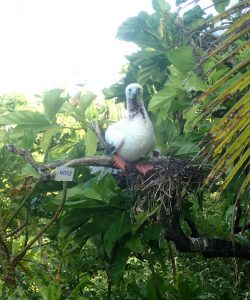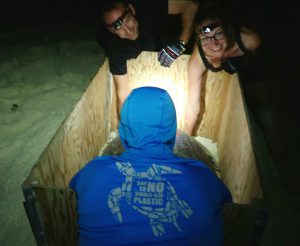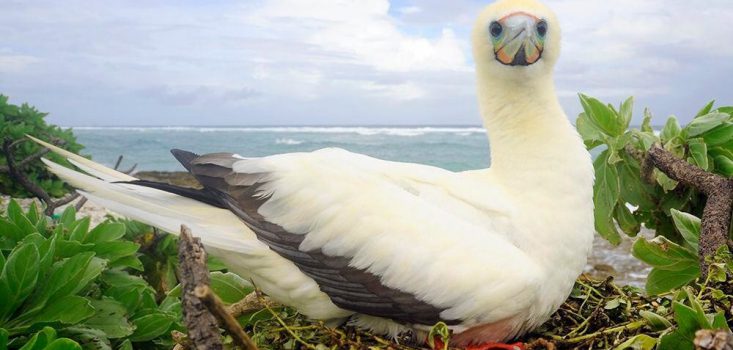Sea bird researchers Dr. Malcolm Nicoll and Hannah Wood from the Zoological Society of London have been working as part of the Bertarelli Foundation’s marine science programme in the Indian Ocean for the last several years. Returning to the British Indian Ocean Territory (BIOT) twice a year to conduct their field-work is always a highlight and their most recent expedition is no exception. Although they counted fewer breeding birds than expected, they still managed to tag 31 adult red-footed boobies in the first few days. Birds were tagged with small GPS loggers that record the birds’ position during their long oceanic foraging trips and are recovered from the birds when they return to their nests.
 The researchers also started a study of the distribution of wedge-tailed shearwaters on Nelson Island. This population of ground-nesting birds has not previously been studied and, at the time of the expedition, the adults were just starting their breeding season, so this is a fantastic opportunity to make an island-wide population survey.
The researchers also started a study of the distribution of wedge-tailed shearwaters on Nelson Island. This population of ground-nesting birds has not previously been studied and, at the time of the expedition, the adults were just starting their breeding season, so this is a fantastic opportunity to make an island-wide population survey.
Meanwhile Dr. Nicole Esteban of Swansea University and Dr. Jacques-Olivier Laloe of Deakin University returned to BIOT to continue their work studying Green and Hawksbill turtles. They had great success flying a drone over Nelson Island’s reef flat to count juvenile turtles using this unique habitat. These new data will help assess how many turtles – and which species – use these waters as foraging grounds.
They also started a new piece of work looking at how plastic pollution is impacting the wildlife on the atoll. Sadly, after completing several surveys of the beaches, they observed that all sorts of single-use and durable plastic items are littered across the island such as plastic bottles, flip-flops, toothbrushes, cigarette lighters, but also cooling boxes and fishing gear. One important research aim is to better understand how this plastic debris might affect the incubation, and sex-ratio of turtle hatchlings.
 The two research teams worked together to conduct night-time turtle surveys and managed to deploy a satellite tag on an adult female green sea turtle. This is the first time a turtle was satellite-tagged on this northern outer island of the Chagos Archipelago and we look forward to finding out where she travels to once she has finished laying her eggs.
The two research teams worked together to conduct night-time turtle surveys and managed to deploy a satellite tag on an adult female green sea turtle. This is the first time a turtle was satellite-tagged on this northern outer island of the Chagos Archipelago and we look forward to finding out where she travels to once she has finished laying her eggs.




